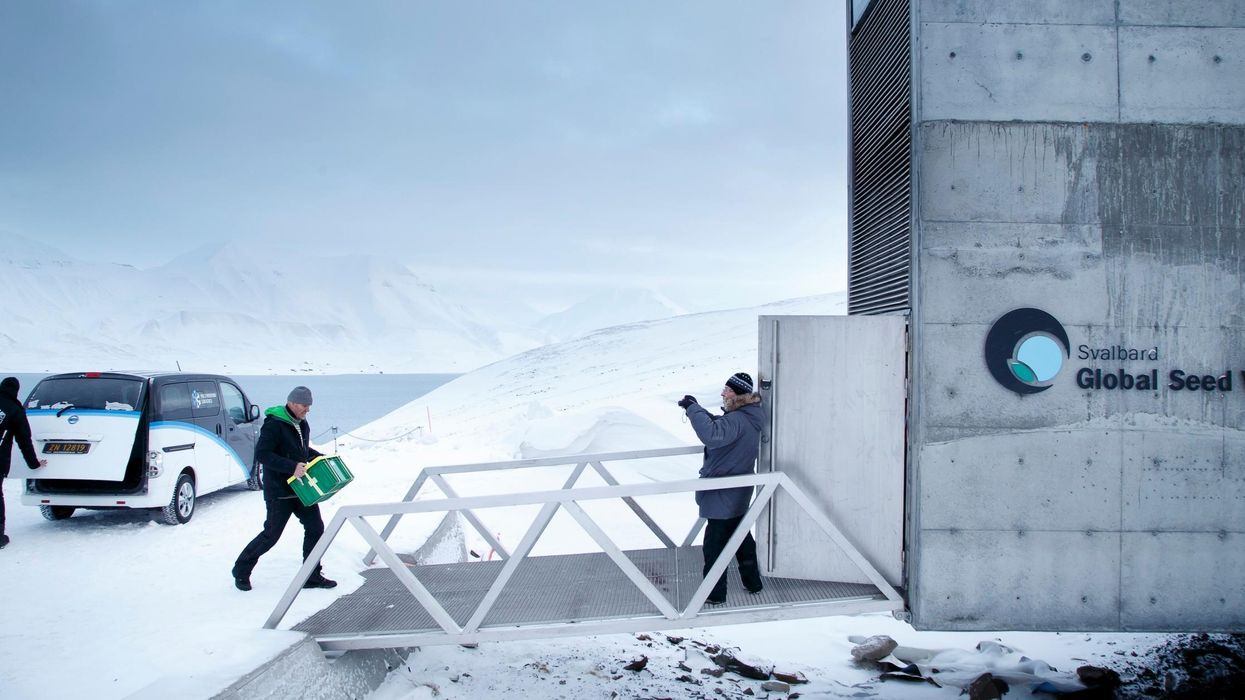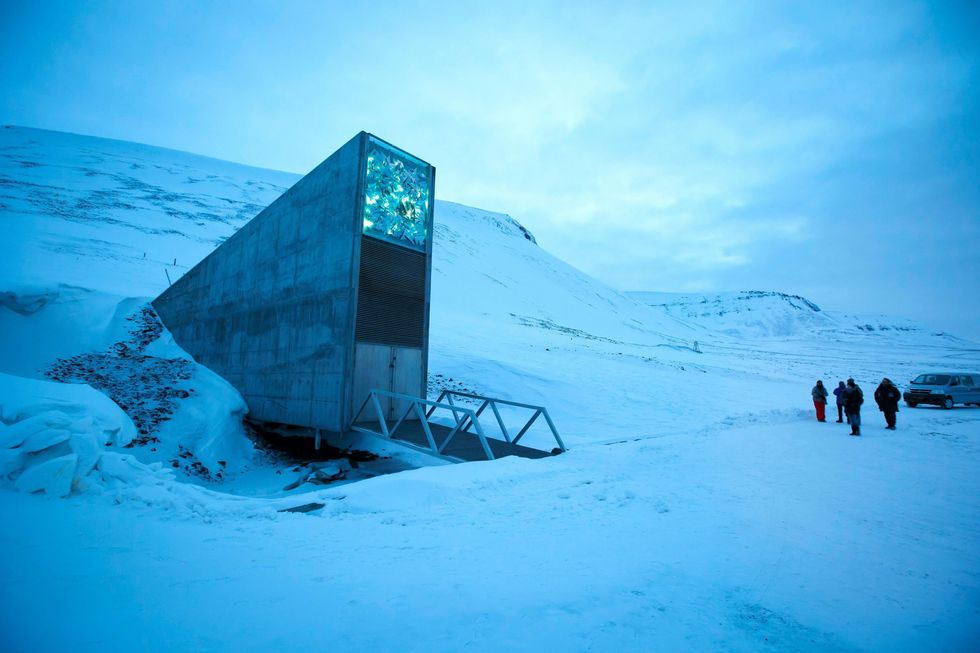News
Louis Dor
Jan 09, 2018

Picture:
AFP/Getty
Just under a decade into its operation, the Svalbard Global Seed Vault has to undergo scheduled reconstruction.
The structure is supposed to be a failsafe storage facility for plantlife in the event of cataclysmic natural disasters, but it's simply not coping with the changing climate.
The structure is more commonly known as the "Doomsday Vault", and was made more famous by being a location in the animated series Futurama.
It was opened in 2008 by then-President of the European Commission José Manuel Barroso and the then-Prime Minister of Norway Jens Stoltenberg. It was later heralded as the world's sixth best invention by Time. It contains 930,000 packets of seeds, each a variety of an important food crop.
The vault has a reserve capacity of three million seedlings.

Climate change around the Svalbard archipelago means that the reconstruction of the vault is now necessary - in May 2017, the structure flooded with tonnes of meltwater following soaring temperatures in the Arctic.
Hege Njaa Aschim, from the Norwegian government which owns the vault, told the Guardian:
It was not in our plans to think that the permafrost would not be there and that it would experience extreme weather like that.
A lot of water went into the start of the tunnel and then it froze to ice, so it was like a glacier when you went in.
She told the Aftenposten:
What has happened since we completed the building in 2008 is that climate change has given us some challenges to boot. Changes in temperature and weather conditions mean that the permafrost has not been restoring itself as expected
Fortunately, the meltwater didn't reach the vault itself and the ice has been hacked out.
The seeds remain at a safe storage temperature of -18 degrees Celsius.
Construction is scheduled to begin next Spring, following a green light from the Ministry of Agriculture and Food, and is scheduled for completion in 2019.
Around 17,000 cubic metres of loose mass will be removed from around the tunnel's opening and will be replaced with a new waterproof, concrete structure.
In addition, the foundation will be reinforced and the cooling and drainage systems will need to be reinforced against meltwater.
You can watch a brief video on the seed bank, below:
HT Sputnik
More: Show these 9 images to your nearest climate-change denier
Top 100
The Conversation (0)













